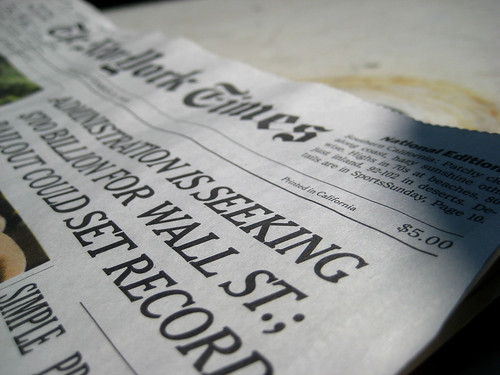Slideshow from The Five Dollar Comparison on Flickr
In the silty ash of this latest economic meltdown, I’m wondering — what does a fin (or its equivalent in the other legal mechanisms of value exchange) get you these days, anyway?
Good question. Really good, when you think that someday soon, with reductions in manufacturing and materials costs, secondary sales markets and other factors will make the cost of owning a phone around that $5 mark. Half the world’s population already owns a mobile phone. It is a very real possibility that some of the world’s remaining 3.3 billion may also participate in mobile communications practices. What does that world look like? How do fundamental aspects of human social life change when personal communication is accessible to almost anyone? Certainly we can only speculate, maybe do some informed speculation.
Recently studio chum Rhys Newman presented “The Five Dollar Comparison” during a Nokia Design roadshow to introduce the question and ask people to participate in discussing the $5 question. We’re doing it simply, without big name thinkers and prognosticators. Just people, taking pictures of things they bought for about $5. Photographs are shared in the fivedollarcomparison group on Flickr. It’s a far ranging, exciting conversation through images, telling stories about how $5 can get you an English speaking taxi driver for door-to-door service in Kabul, or $5 will get you a delicious bowl of pork ramen in Shibuya, or a porter to carry your 25 kilo load for half a day up the Inca Trail in Peru, or a thick fancy Sunday newspaper in Venice Beach.
Photo by svanes
Personal communications for $5. Sounds noble in the age of iPhones and Google Phones and overpriced double-billed phone plans — toys for people with jobs and maybe a bit of a fear of not having the latest and greatest that their friends have. Or, maybe just good business sense in a world where the Nokia 1100, the number one selling phone in the world, has sold 200 million units — the biggest single consumer electronics device out there in the world. Count them. It’s true. No joke.
Access to a way to project oneself across town, or across the world. It puts into question the meaning of distance and time; changes how authority and trust are managed; changes who participates, where conversations start and how communities are formed. Somewhere a phone will mean the possibility to begin interest-bearing savings. Somewhere else, a phone will mean finding out where work for the day might, rather than guessing and perhaps losing a day’s wages. Somewhere else again, phones will become disposable, one-off objects that, hopefully, do not clutter the mountains of waste already choking us.
This is where we’re starting. Asking a question to start a conversation about five dollars. There is no one answer. There may just likely be 3.3 billion answers, each as personal as the communications a five dollar phone affords.
Discussions around the consequenes of a truly connected planet have been going on for some time and the fivedollarcomparison.org is a small step to broaden the discussion and explore how the impact might vary across cultures and contexts by asking this simple question: what can you buy for five dollars?
Participate. Let us know what kind of object or service you can buy for $5 dollars wherever you are, and wherever you go. Email your submissions to add@fivedollarcomparison.org or adding them to the fivedollarcomparison group on Flickr Please read through the guidelines on fivedollarcomparison.org/participate.
Studio mates Raphael Grignani and Jan Chipchase have some thoughts on this topic, too.
